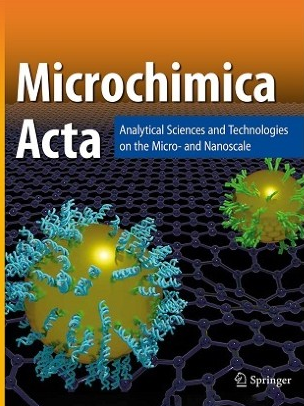Hierarchical mesoporous ZIF-8–immobilized enzyme microreactor coupled with HPLC for screening of α-glucosidase inhibitors from green tea
Abstract
Hierarchical mesoporous ZIF-8 (HZIF-8) was synthesized using a thermosensitive hydrogel as a soft template. Zinc ions (Zn2+) were uniformly dispersed on the hydrogel surface through metal-ion coordination with salicylic acid and melamine, followed by coordination with 2-methylimidazole at room temperature. After the thermal removal of salicylic acid and melamine, HZIF-8 was obtained which exhibited a bimodal pore structure comprising both micropores and mesopores. α-Glucosidase (α-Glu) was encapsulated into HZIF-8 via an in-situ diffusion method to construct an immobilized α-Glu microreactor. The morphological and structural characteristics of HZIF-8 before and after α-Glu immobilization were thoroughly characterized using Fourier transform infrared spectroscopy (FT-IR), electron microscopy, X-ray diffraction (XRD), and Brunauer-Emmet-Teller (BET) analysis. The immobilization optimization studies revealed that the optimal immobilization time was 3 h, and the ideal mass ratio of HZIF-8 to α-Glu was 5:2 (w/w). Under these conditions, the α-Glu loading capacity reached 82.09 μg/mg, and the immobilized α-Glu microreactor still retained 70% enzyme activity after seven cycles. The application of the HZIF-8-α-Glu microreactor was verified by coupling with high performance liquid chromatography (HPLC) for the offline screening of α-Glu inhibitors in green tea extract. The experimental results demonstrated the application of the immobilized α-Glu microreactor by screening out catechin and epicatechin gallate from the tea extract.
Graphical Abstract


 求助内容:
求助内容: 应助结果提醒方式:
应助结果提醒方式:


